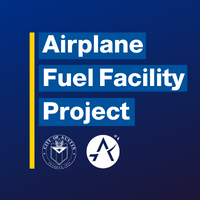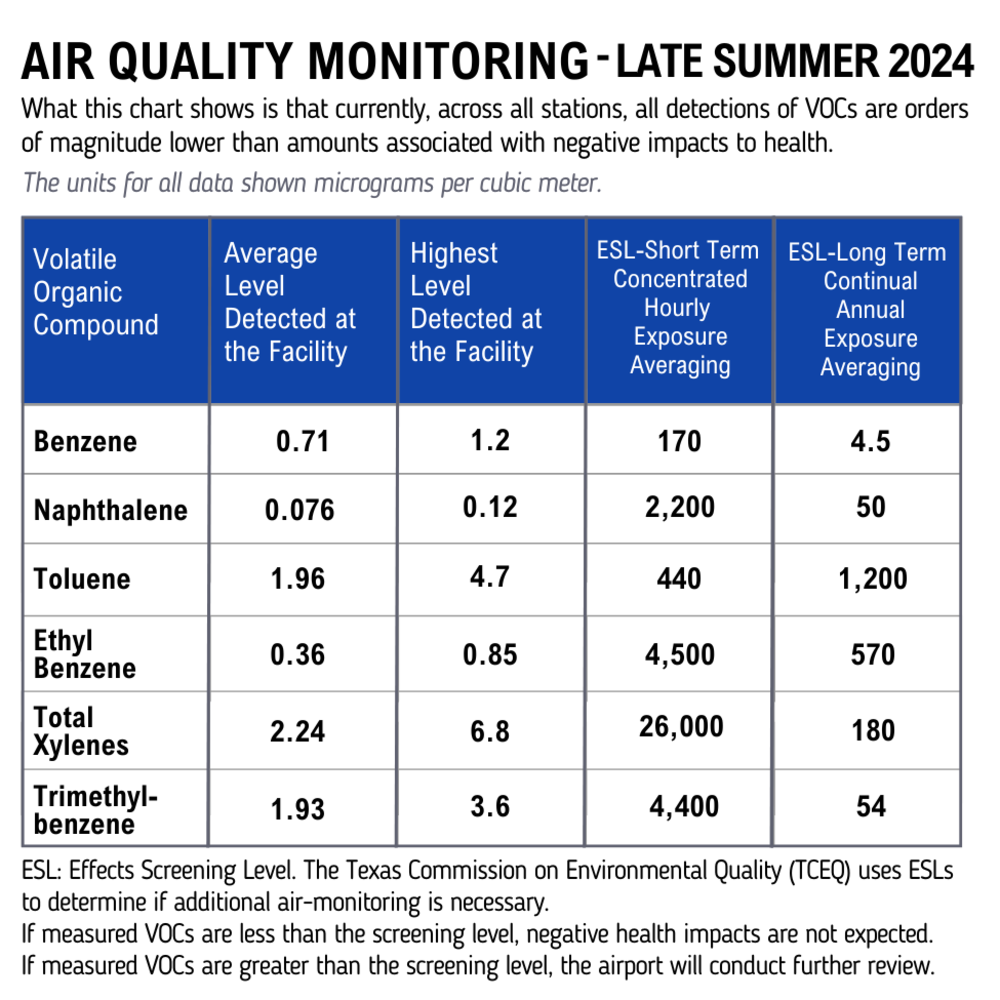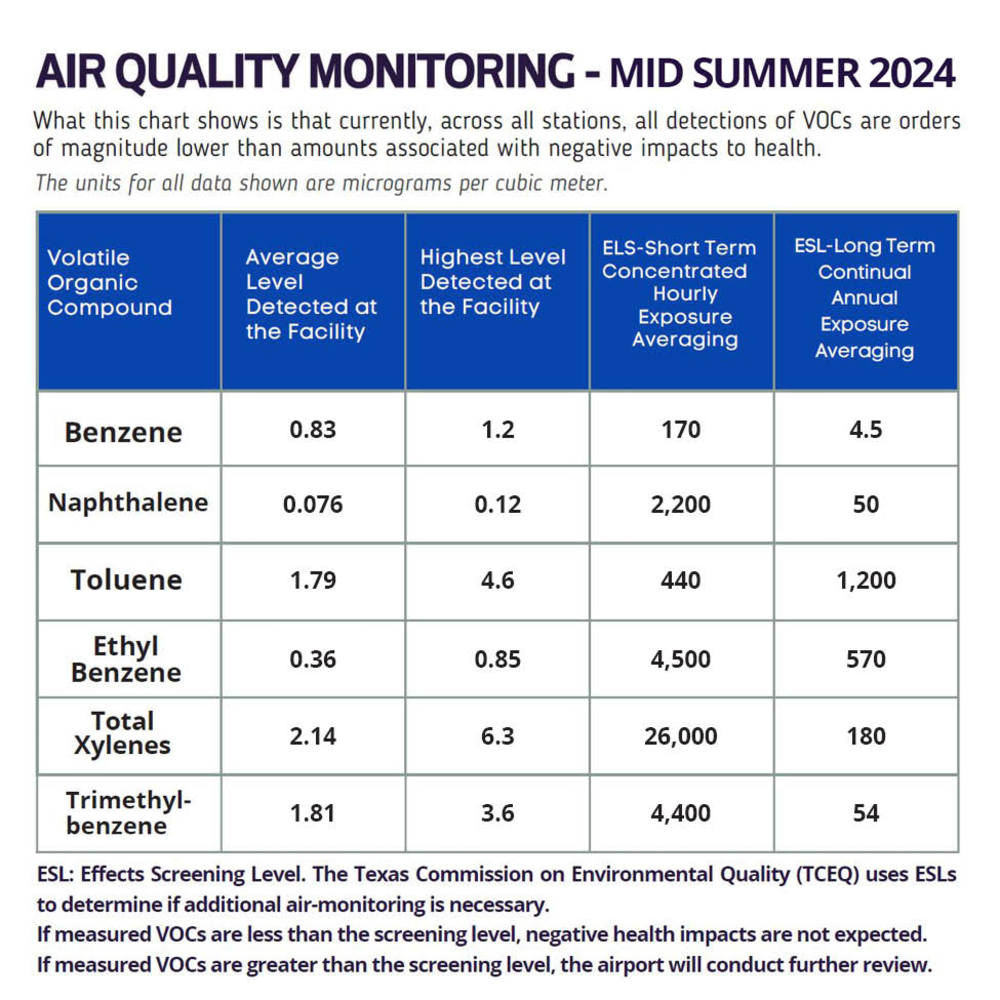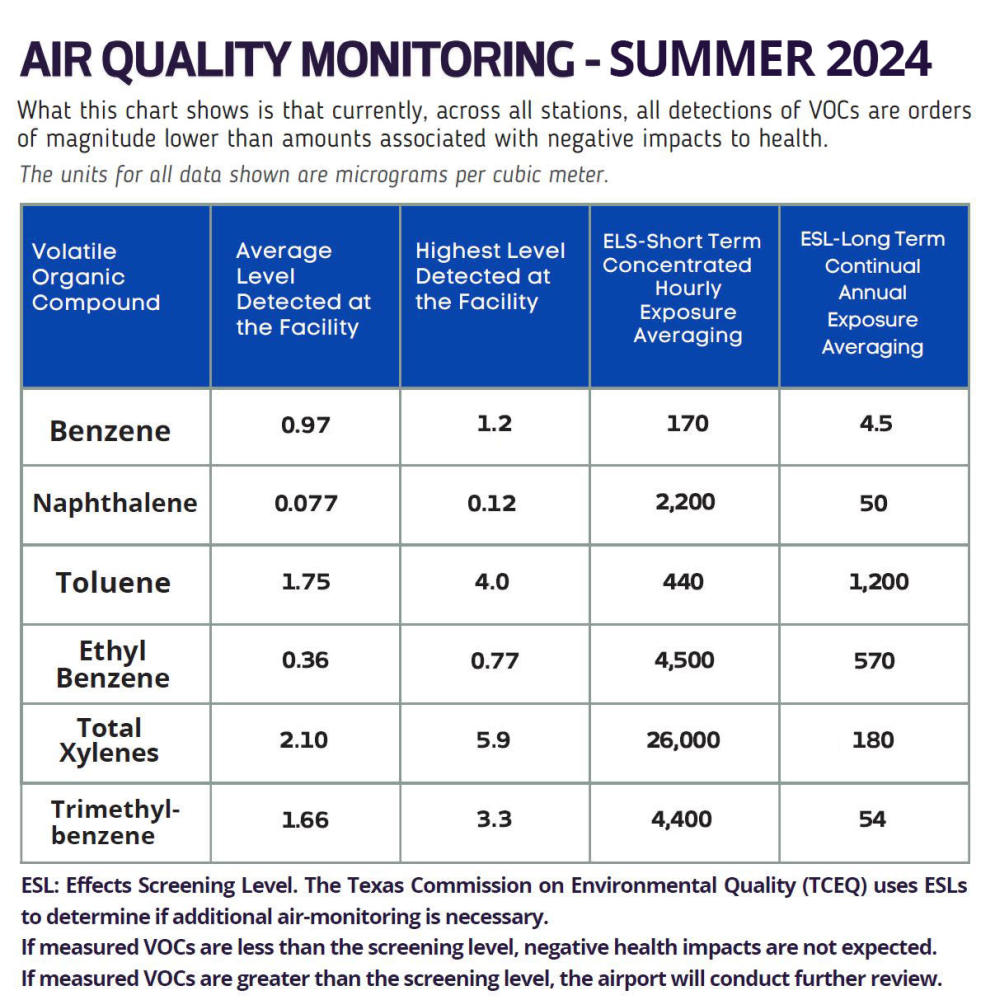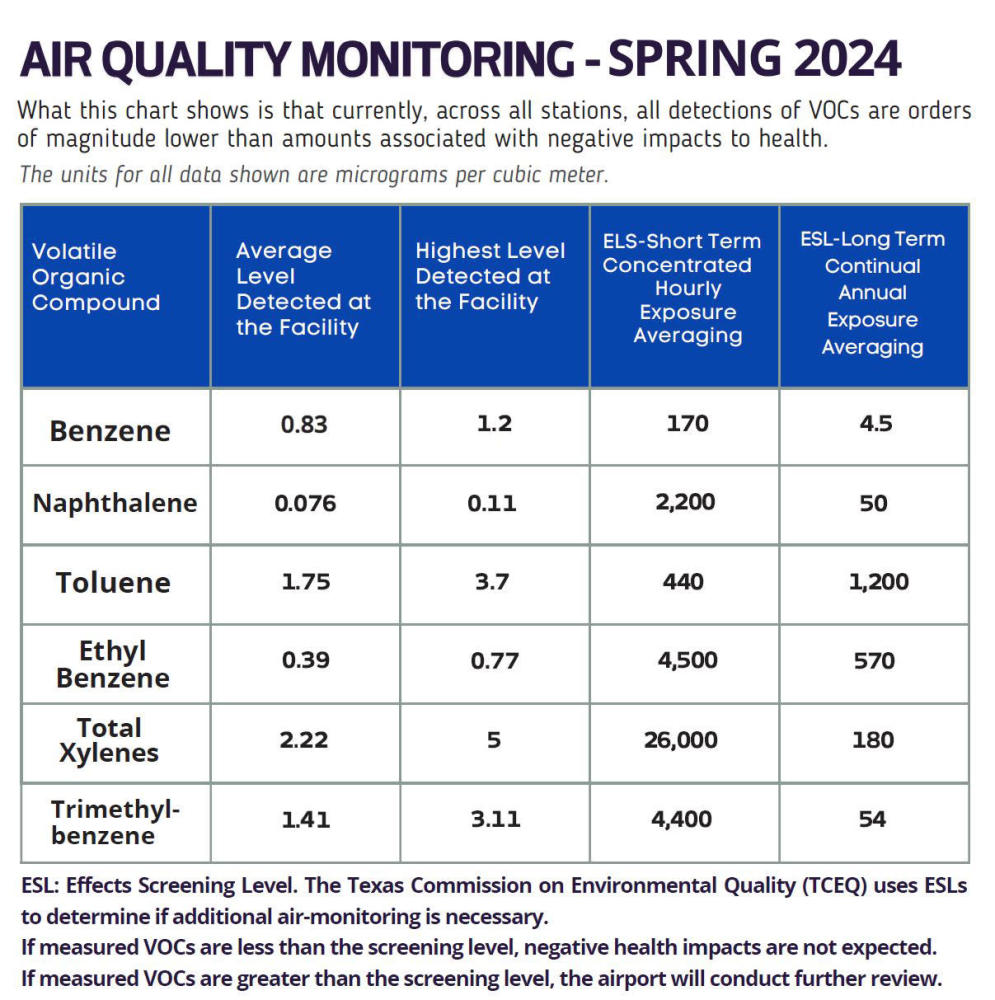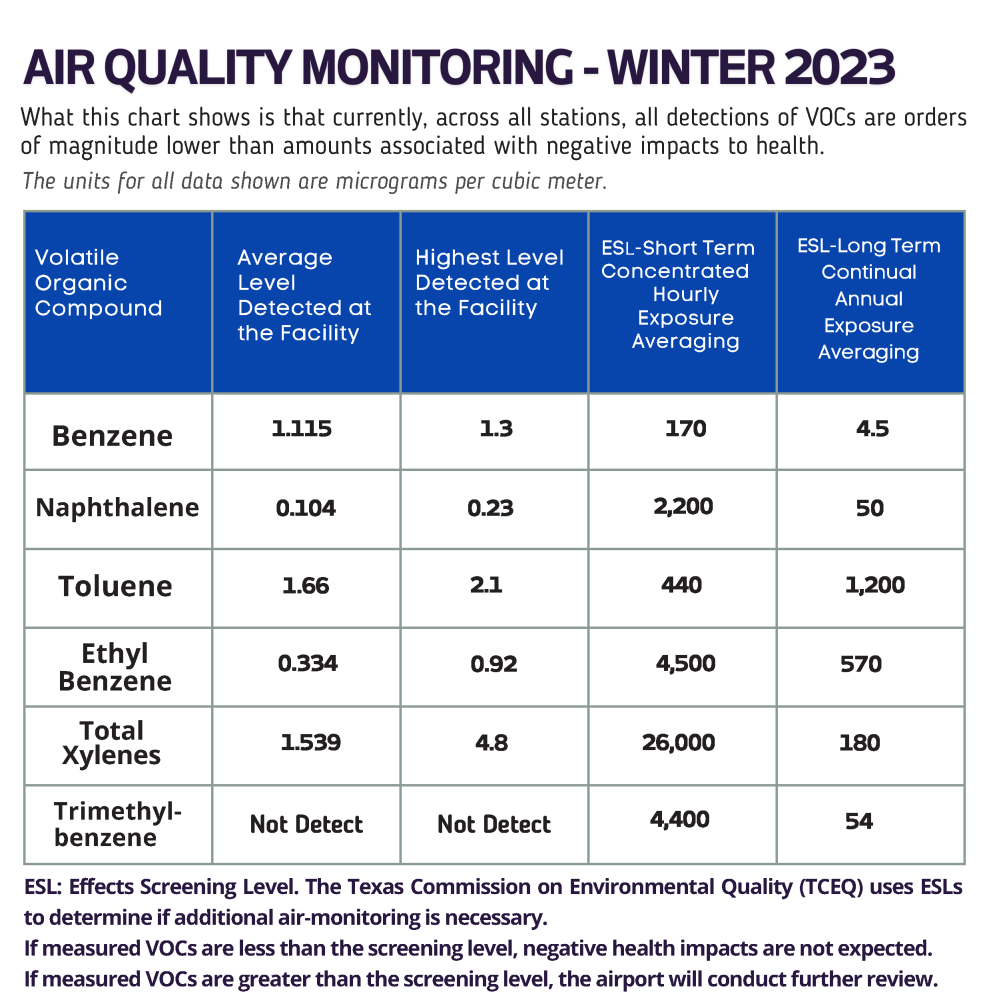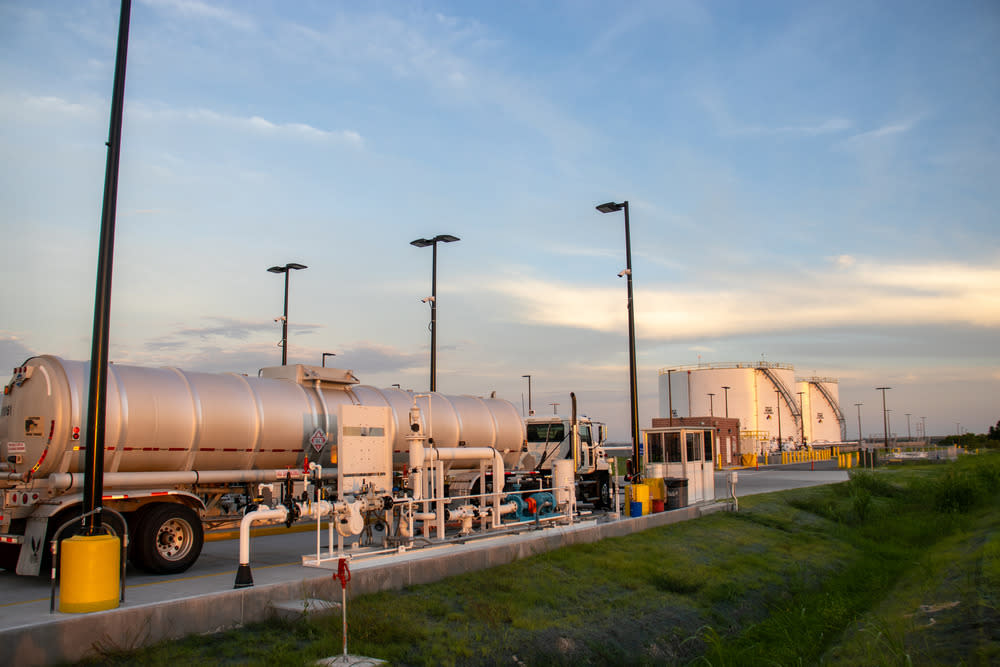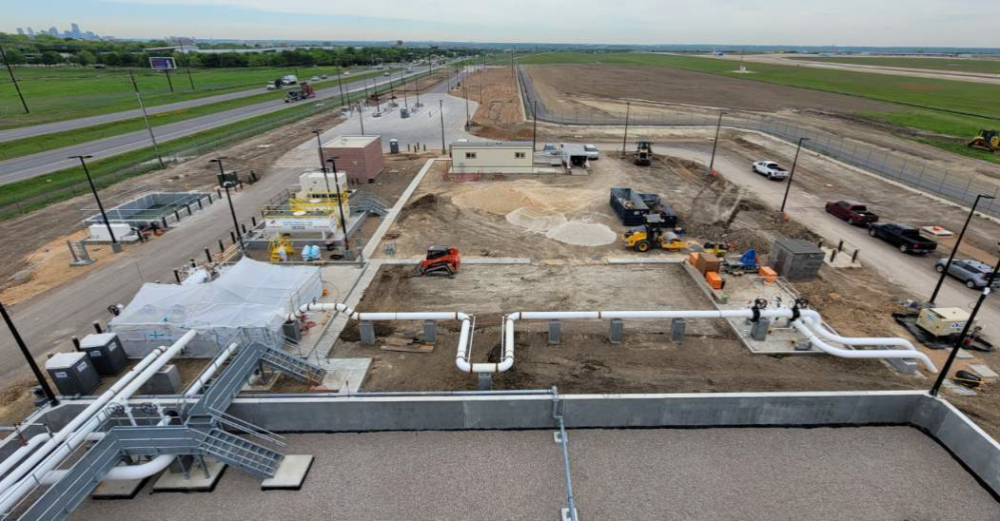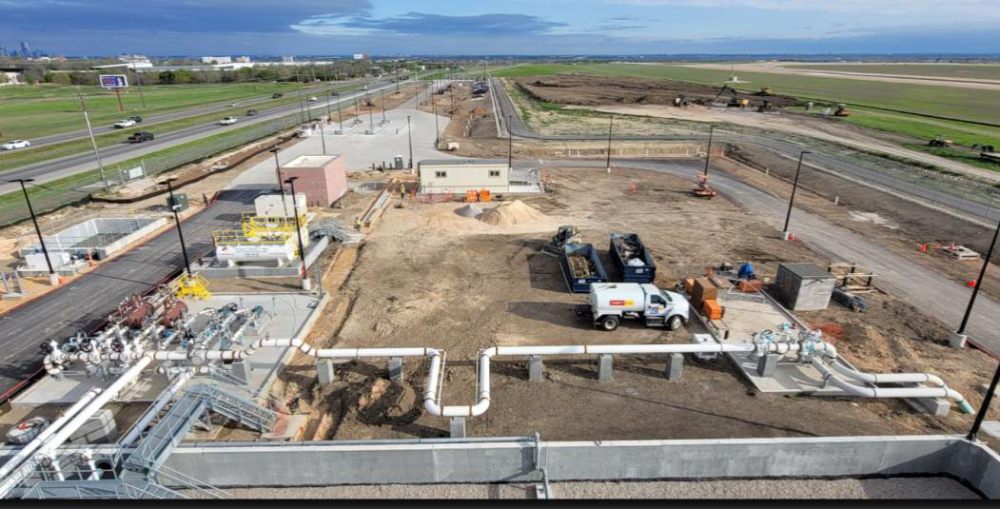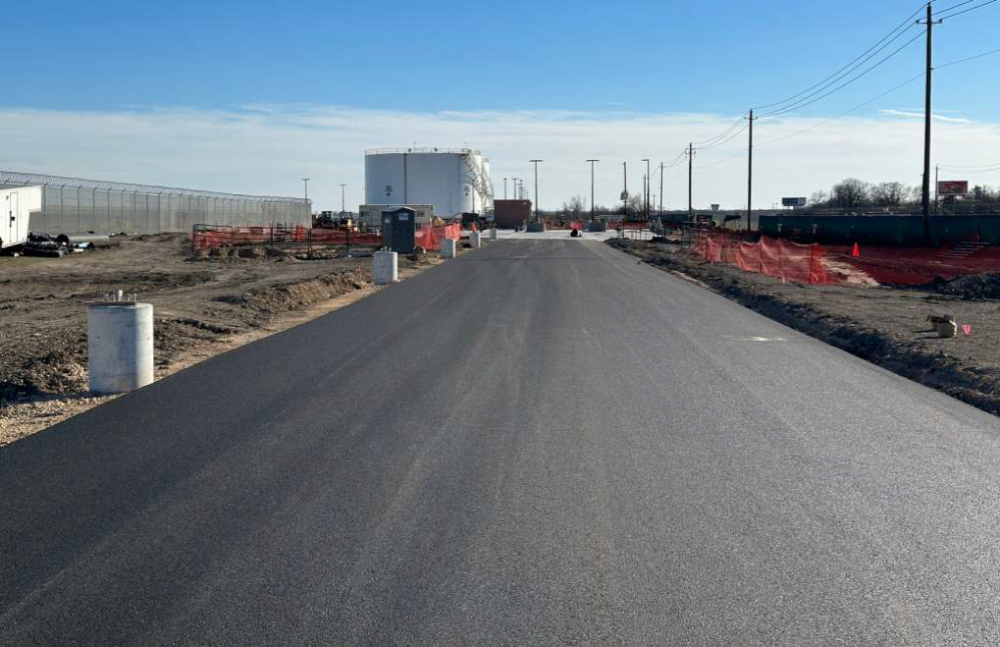Airport Project: Airplane Fuel Facility Project
Airport Project: Airplane Fuel Facility Project
In 1999, Austin-Bergstrom International Airport (AUS), which is owned and operated by the City of Austin, opened its doors to Austin and Central Texas and has been growing ever since. 2023 was the airport’s busiest year, with over 22 million passengers flying out of AUS. As the airport continues to recover from the impacts of the COVID-19 pandemic, the demand for air travel has significantly increased and the expected number of flights and passengers will double in 20 years. With an increasing demand for air travel and development at the airport, the airport must construct a second Jet-A fuel, or airplane fuel, facility to have enough fuel supply in the coming years to support a growing airport, a growing city and a growing economy.
Airplane Fuel Facility Video Overview
Take a video tour of the original AUS fuel facility to get a behind-the-scenes look at how the site safely and efficiently stores fuel for commercial and cargo flights.
For the full report, click here.
For the full report, click here.
For the full report, click here.
For the full report, click here.
July 2024
The fuel facility construction is complete and the facility is operational.
Fuel Facility Looking South
April 2024
Crews started landscaping activities, including the rain gardens. Also, facility signage was installed.
Progress Looking South
March 2024
Crews continued to erect and energize light poles throughout the site. Substantial completion of the West Facility has been achieved.
Progress Looking North
February 2024
Crews continued work on the rain gardens. The Austin Fire Department (AFD) inspected and approved the facility. The facility also hosted two AFD training/site visits.
Progress Looking North
Janauary 2024
Crews completed the asphalt paving at the north end of the facility, and continued construction on the rain gardens.
Asphalt Paving at Entrance
Current Airplane Fuel Facility - Background & History
The airport’s main airplane fuel facility storage was constructed in 1998 and is located next to the Barbara Jordan Terminal. The current facility consists of two fuel tanks, one holds 481,000 and the other 691,700 gallons. This facility was created to be the safest and most efficient way to store and supply airplane fuel. It is continuously monitored and undergoes regular inspections by the Austin Fire Department, the Department of Aviation and the airlines. The facility is owned by the airlines that serve AUS and is operated by an independent aviation fueling services provider. The new facility will also be owned and operated by the airlines and their fueling services provider, with the same 24/7 monitoring and regular safety inspections.
For more information about the new facility, read the project fact sheet.
The Need For A New Facility
Since the airport first opened, the number of annual passengers has tripled and the current facility no longer meets the needs of Austin’s growing community. The facility currently has a 2–3-day fuel supply, which doesn't meet the 5-7 day industry standard and cannot support future air service growth for 2022 and beyond. AUS forecasts an increase in fuel demand by an average of 3% to 5% annually over the next ten years.
The new facility will provide a more reliable, safe supply of fuel for the airlines and reliable air service for our community. It was identified as a development project through the airport’s 2040 Master Plan process.
The AUS 2040 Master Plan
In 2017, the Department of Aviation began creating the 2040 Master Plan, which guides the airport’s growth as it doubles in size and serves as a roadmap to the future modernization of AUS. The need for a new fuel facility and the location of the new fuel facility were identified through this process and are in the final 2040 Master Plan document, which was approved by the Austin City Council and the Federal Aviation Administration.
You can read the 2040 Master Plan and learn more about the plan’s process on this webpage.
Environmental Review
Before an airplane fuel facility is constructed, an environmental review is done to evaluate the potential environmental impact of the facility. All information from the review is presented to the Federal Aviation Administration (FAA), the administration that determines if it is safe to create a facility in the first place. If no significant impacts to air quality, socioeconomics or environmental justice, water resources, or other surroundings are expected to occur, then it’s safe to build a fuel facility. In preparation for the new fuel facility, AUS, the airlines and a team of consultants conducted an environmental review and submitted their review to the FAA. The review was granted approval by the FAA on April 8, 2020.
AUS 2040 Master Plan Public Workshops
From 2017 - 2018, the Department of Aviation hosted a series of Master Plan Public Workshops, Project Advisory Committee and Technical Advisory Committee meetings. You can review the archived meeting materials at this webpage:
- October 12, 2017 - Public Workshop #1
- April 19, 2018 - Public Workshop #2
- June 7, 2018 - Public Workshop #3
- September 6, 2018 - Public Workshop #4
District 2 Fall 2021 Community Meetings
In fall 2021, the Department of Aviation and a representative from the engineering firm who is designing the new facility shared a presentation and answered community members' questions. You can view the presentation at this link.
- October 4 - Virtual Meeting
- November 10 - In-Person Meeting
January 29, 2022 Community Information Meetings
On Saturday, January 29, the City of Austin Department of Aviation hosted three community information meetings to inform community members and connect them to educational resources about the site selection, operations, safety, and security features of a proposed jet fuel storage facility. The meetings were in response to City of Austin Council Resolution NO. 20211209-061 and were intended to address the digital divide and language access barriers experienced by community members. One virtual meeting and two limited attendance in-person meetings were held. Both meetings provided simultaneous Spanish interpretation by professional interpreters.
View the February 7, 2022 memo from the Department of Aviation to Mayor and City Council to learn more about how these meetings were attended and publicized.
March 7, 2022 Listening Session
On March 7, 2022 Department of Aviation leadership attended a listening session led by community members to hear personal testimony for airport-adjacent neighbors and community members who were affected by the historic injustice of the East Austin petroleum storage tanks.
April 5, 2022 Austin City Council Work Session - Jet Fuel Storage Facility
AUS leadership briefed Austin City Council on the Fuel Facility Project at the City Council Work Session on April 5, 2022. The Work Session was recorded by ATXN which can be watched online at: https://austintx.new.swagit.com/videos/158053
Email - CommunityAffairs@flyaustin.com
2022 Community Meetings Summary Report
Council Work Session Presentations
Alternative Site Analysis & New Site Renderings
Environmental Assessment Documentation
Archieved Monthly Project Updates
2022 Fuel Facility Monthly Project Updates
2023 Fuel Facility Monthly Project Updates
